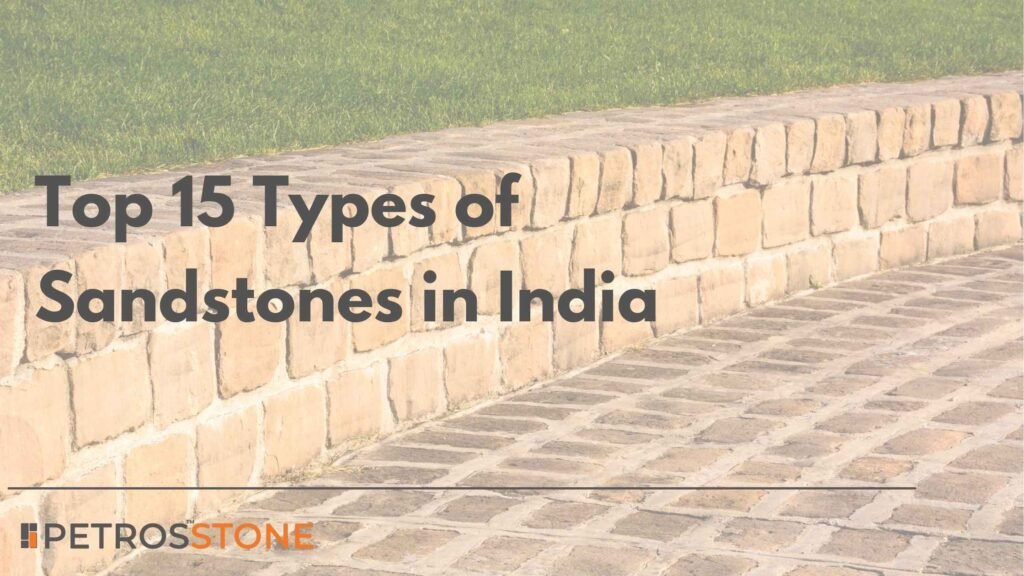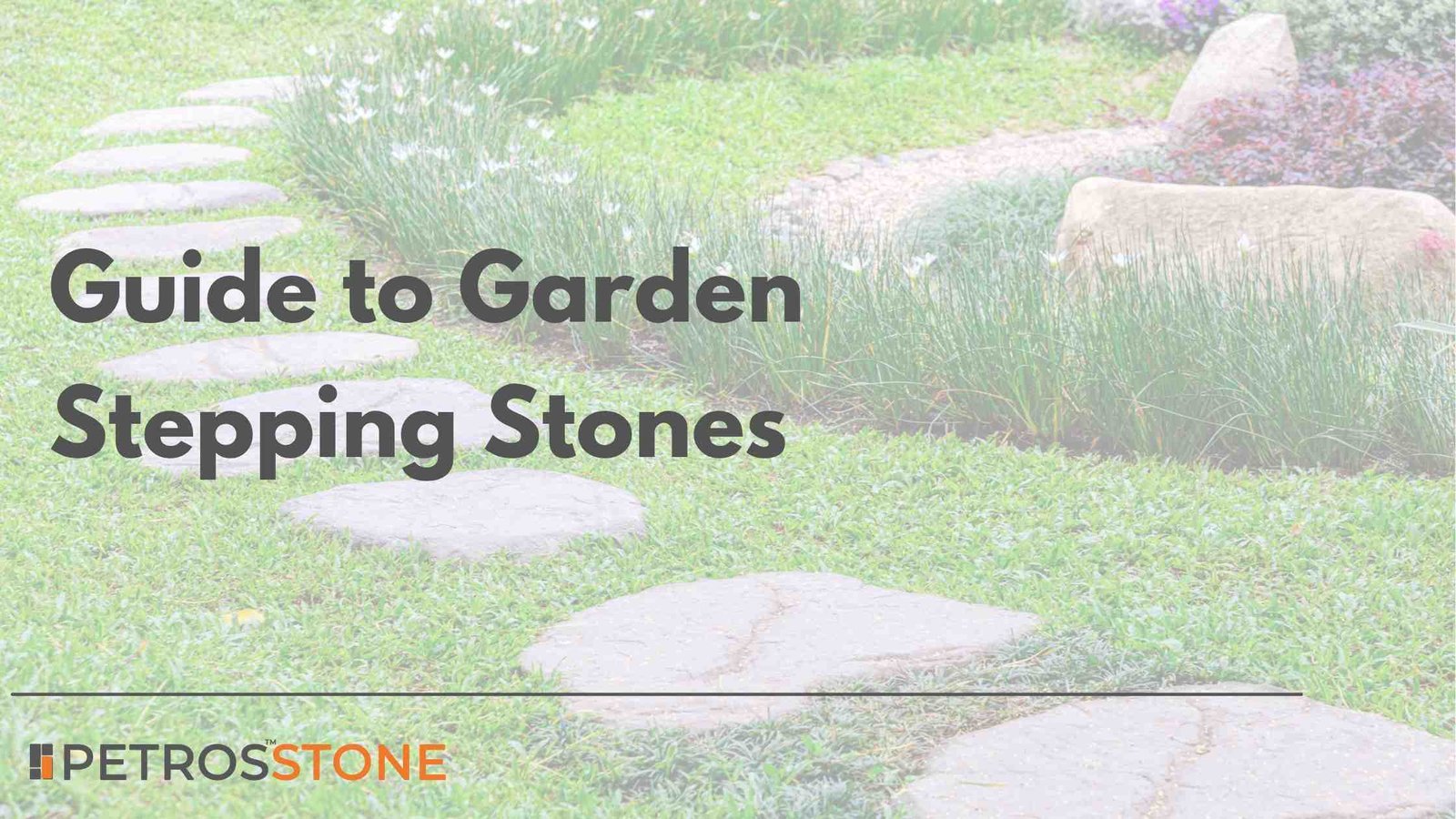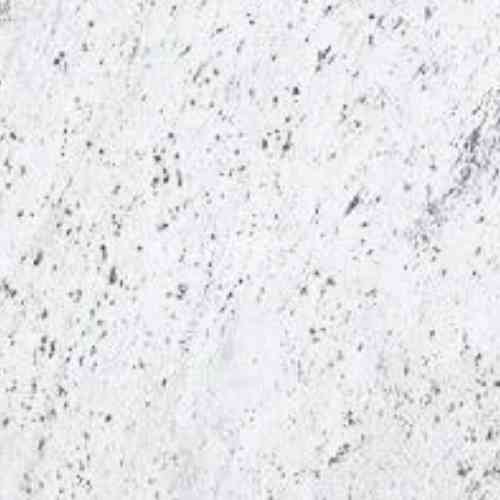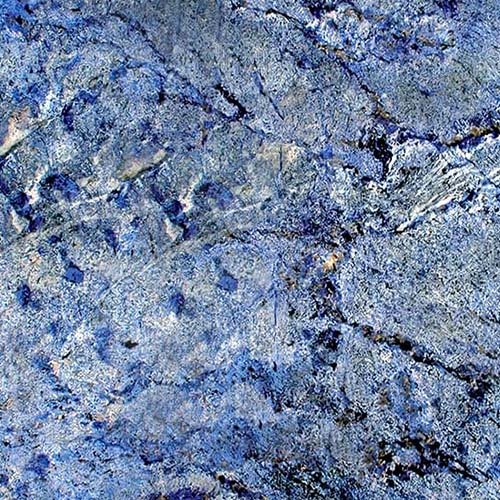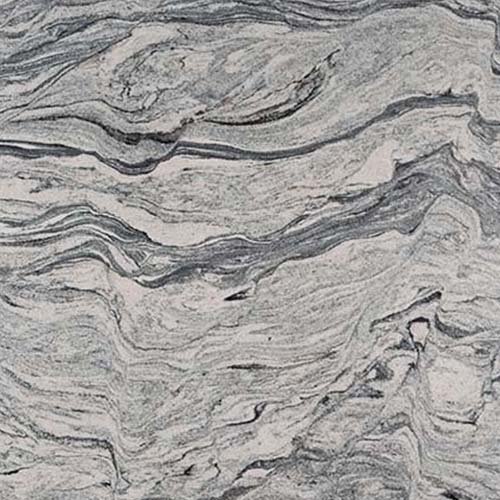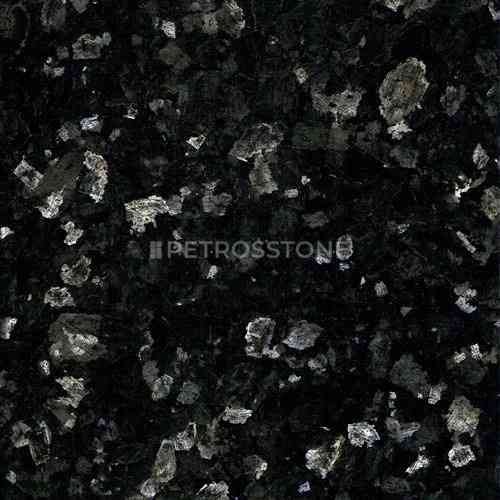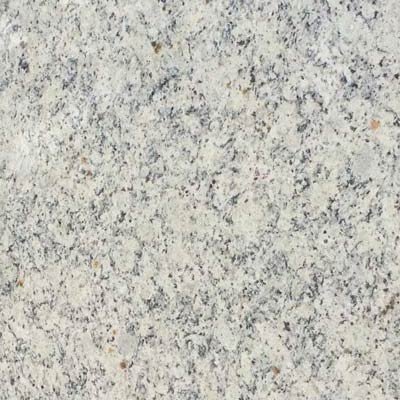
The popular materials that can be used for your pathway include gravel, granite, sandstone, mulch, pavers, concrete, bricks, stepping stones, and wood chips.
While gravel for pathways is the cheapest, at just USD 0.80 per sq. ft., mulch costs around USD 0.29 per sq. ft. Wood chips are slightly higher at around USD 0.45 per sq. ft. Promising durable materials for pathways, pavers run around USD 1.87 per sq. ft. and concrete pathways average USD 1.33 per sq. ft. While granite costs around USD 1.81 per sq. ft., sandstone averages USD 1.69 per sq. ft.
In this article, we will walk you through the best pathway materials that you can use to create an elegant pathway. From gravel to stepping stones, this article offers a detailed breakdown of the associated design ideas, costs, pros, cons, and innovative solutions for your pathways.
Here’s a list of 9 Best Materials for Pathways:
- Gravel
- Granite
- Sandstone
- Stepping Stones
- Mulch
- Pavers
- Concrete
- Bricks
- Wood Chips
9 Best Pathway Materials
Let’s dive deeper into the materials available for pathways, their pros and cons, associated costs, and design ideas to enhance the curb appeal and value of your property. Have an insight:
1. Gravel Pathway
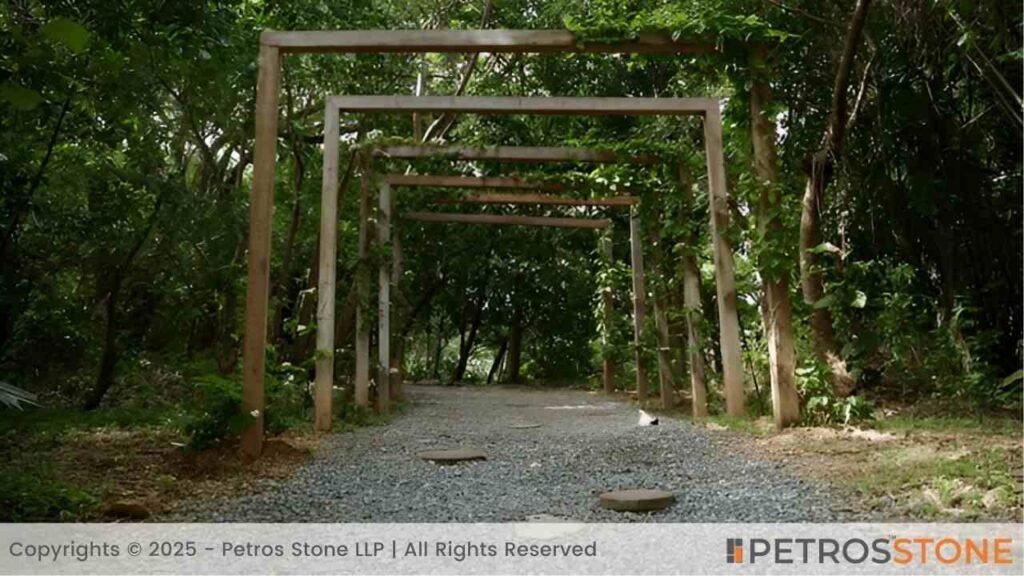
Design
- When it comes to choosing the best pathway material, gravel always excels the list.
- Its timeless appeal and availability in different colors and textures make it a household choice for pathways.
Pros
- Much cheaper than pavers or concrete.
- Easy to install, as you just have to spread the gravel
- Comparatively easier water drainage, thus preventing erosion
- Choose among a variety of options, including crushed stone, pea gravel, and many more.
- Goes well with the natural landscapes
Cons
- Gravel can spread over time.
- Requires regular leveling to prevent unleveled surfaces.
- Uncomfortable to walk barefoot, especially on pea gravel
- Regular maintenance is needed to weed out growth through the gravel
Costs
- Price range between USD 0.42 – 1.20 per square foot.
- Also consider the base preparation costs.
- Saves you installation costs as you can easily do it by yourself.
Takeaways
- It is advisable to use 1/4th inch minus gravel for pathways as it fits effectively and does not move when you walk on it.
- You can prefer crushed gravel over the pea gravel if you want your pathway to be suitable for wheeled items.
2. Granite Pathway
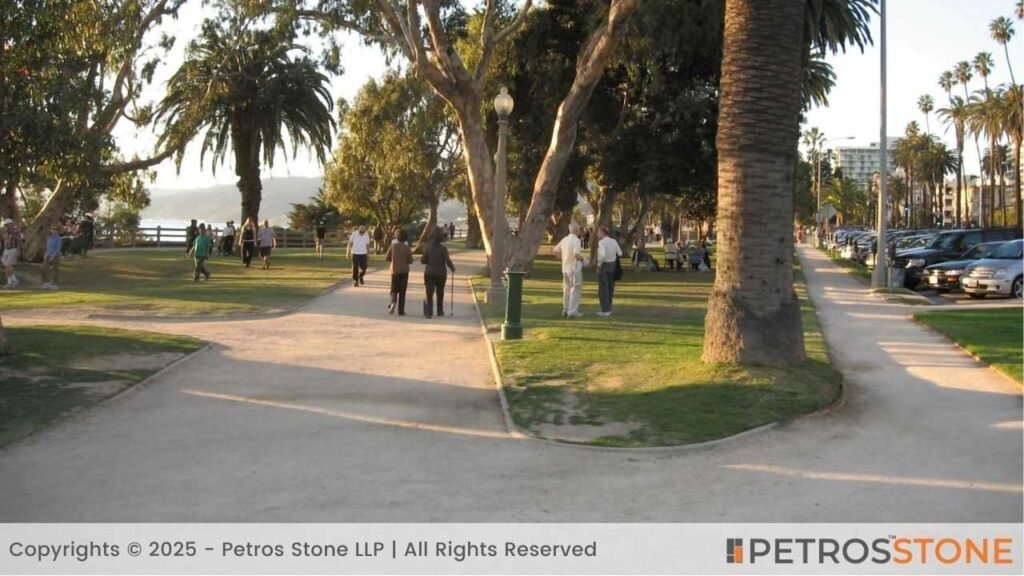
Design
- Granite offers a natural-looking gravel path with great durability.
- Non-slippery material that comes in different colors and sizes.
- Complements residential, commercial, as well as natural settings.
Pros
- Use granite for a natural look and feel.
- Make your pathways firm enough to bear heavy traffic.
- Cost-effective alternative to other materials.
- Easy to install
Cons
- Not very long-lasting, thus you will have to replace or renew it within 10-12 years.
- The materials can stick to your shoes and can be tracked into other areas.
- Much likely to scatter unless edging is done.
- Regular weed and debris removal.
Costs
- Loose decomposed granite ranges from USD 1.45 – 2.17 per square foot.
- Stabilized granite costs around 185 USD per ton.
- Natural stone pavers, including tumbled granite or flagstone, range between USD 2.5 -7.85 per sq. foot.
Takeaways
- Avoid installing granite pathways near water pool areas, as effective drainage is important.
- Choose decomposed granite if you are looking for a budget-friendly option while offering a natural look to your pathway.
3. Sandstone Pathway
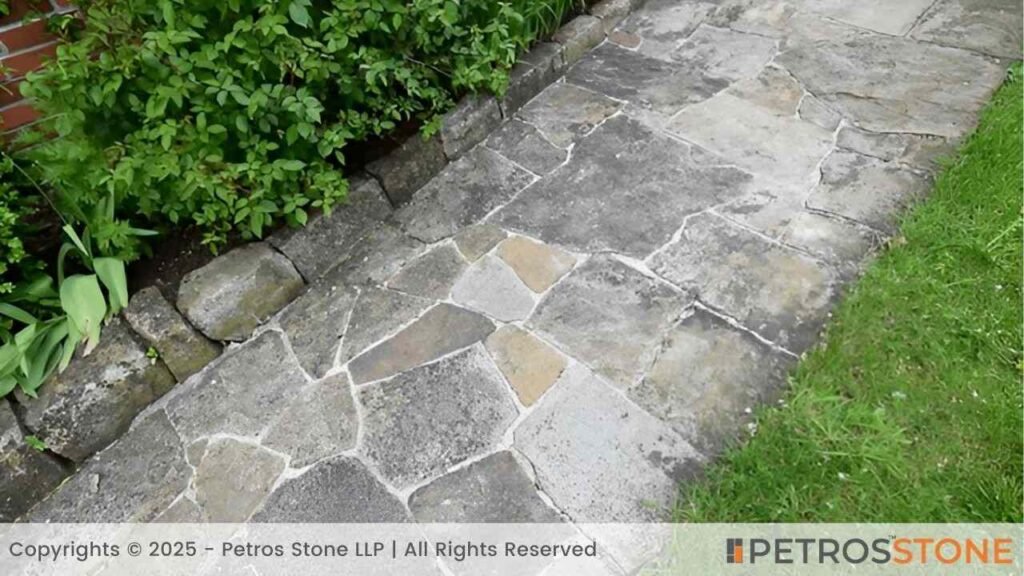
Design
- Want to ditch that boring concrete paving? Give a shot to sandstone!
- Give a touch of elegance to your patio or pathway.
- It offers amazing benefits, right from durability to aesthetics.
- If properly maintained, it can last for more than 50 years.
Pros
- This natural stone comes in different shades and textures to give your patio a beautiful look.
- Sandstone can handle heavy foot traffic.
- Highly suitable for various residential uses.
- Environmental-friendly option
- Enhance the aesthetic appeal of your property by up to 15%.
Cons
- Regular maintenance is required to keep sandstone looking fresh.
- It can be slippery when wet.
Cost
- Sandstone costs between USD 0.87 – 1.90 per square foot.
Takeaways
Incorporate hidden lighting into sandstone pathways to transform your pathway into a soft and ambient glow.
4. Stepping Stones Pathway

Design
Looking for a low-profile pathway option? Choose stepping stones.
- They are versatile and blend easily with the natural elements.
- The stones include flagstone, sandstone, slate, bluestone, concrete pavers, recycled materials, and wood.
Pros
- Stepping stones can be a budget-friendly choice.
- No drainage issues as the spacing allows rainwater to seep easily.
- Available in different patternsOffer versatility in design.
- Quite simple and easy to install.
Cons
- Stepping stones tend to crack or shift over time.
- Can be costly
- Requires proper leveling due to uneven shapes.
- Demands regular maintenance due to weed growth.
Costs
- Costs may vary depending on the type of material used.
- While concrete pavers range between USD 1.5 – 4.7 per stone, natural stones are available at a significantly higher price, ranging from USD 3.5 – 4.3 per sq. ft.
Takeaways
Add a creative touch by using unusual-shaped objects, such as shells spaced among the regular stones.
5. Mulch Pathway
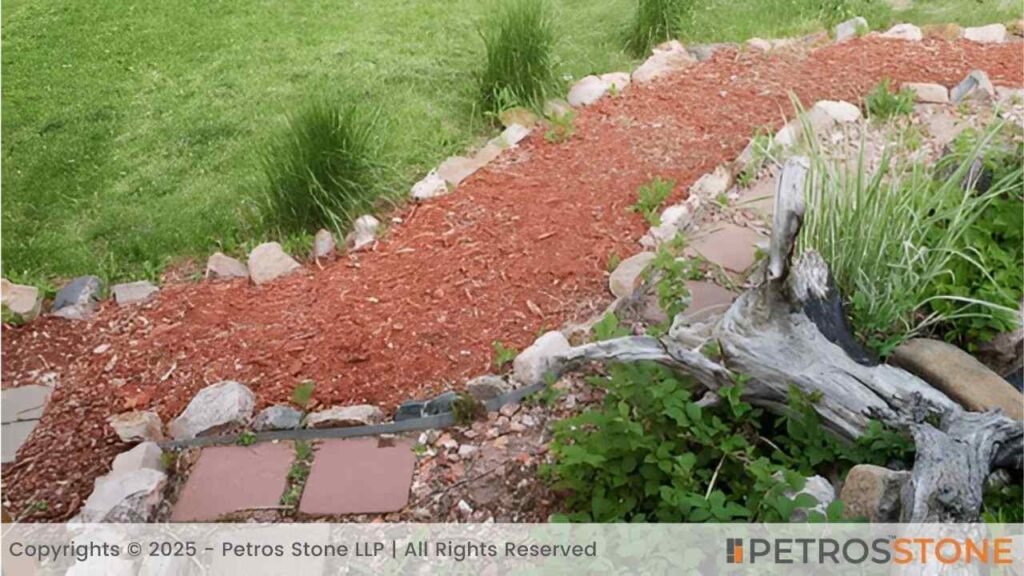
- Mulch is best known for working on the visual appearance of your pathway.
- It offers a rustic and natural look that goes effortlessly with plants and other garden elements.
Pros
- One of the most affordable pathway materials. You can create it on your own.
- Very easy to install, as you just need to spread it over the desired area.
- Mulch offers a soft surface to walk on.
- It also helps in reducing weed growth.
Cons
- As mulch decomposes with time, you need to fill it regularly.
- Mulch pathways can be slippery when wet.
- It is not as durable as other materials.
- Not suitable for areas with poor drainage.
Costs
- Mulch costs between USD 0.10 – 0.48 per square foot.
- Also consider costs for frequent fillings.
Takeaways
- Dig in 4 inches and add landscape fabric.
- It ensures that the material will stay exactly where you want it to be.
6. Pavers Pathway
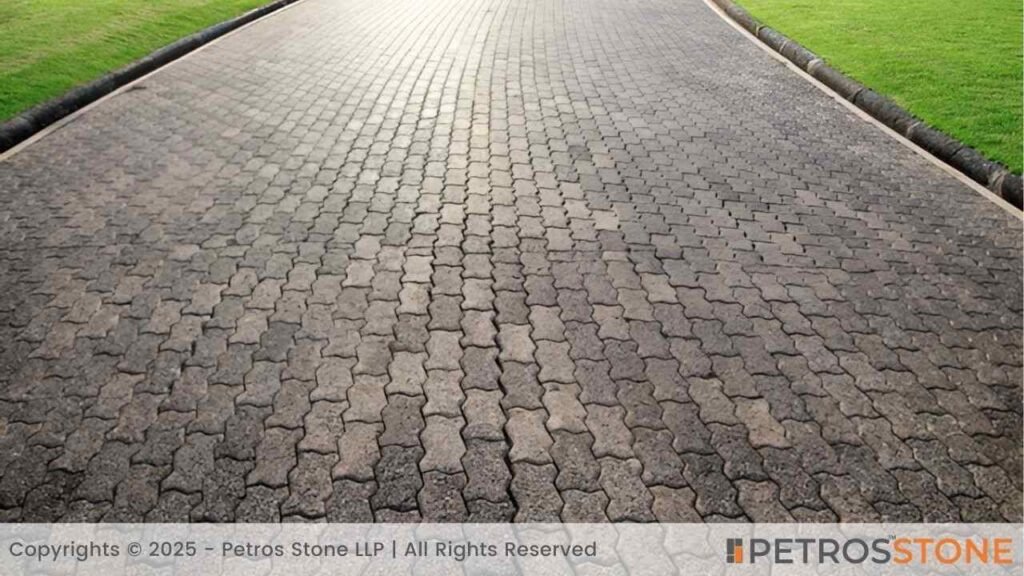
Design
- If your pathway leads to a patio, pavers can be the best choice for you.
- You can choose among a range of options when it comes to different shapes, patterns, and colors.
- Pavers fit well with any type of pathway and can accentuate any home style.
Pros
- Offers good drainage as water can easily seep between the gaps.
- Offers flexibility when it comes to design.
- Easy to maintain as it requires occasional cleaning.
- Withstand harsh weather conditions.
Cons
- Expensive installation
Costs
- Pavers cost between USD 1.08 – 2.65 sq. ft.
Takeaways
Ensure that the paver is 5 feet wide for the front entry pathway and 3 feet for other paths.
7. Concrete Pathway
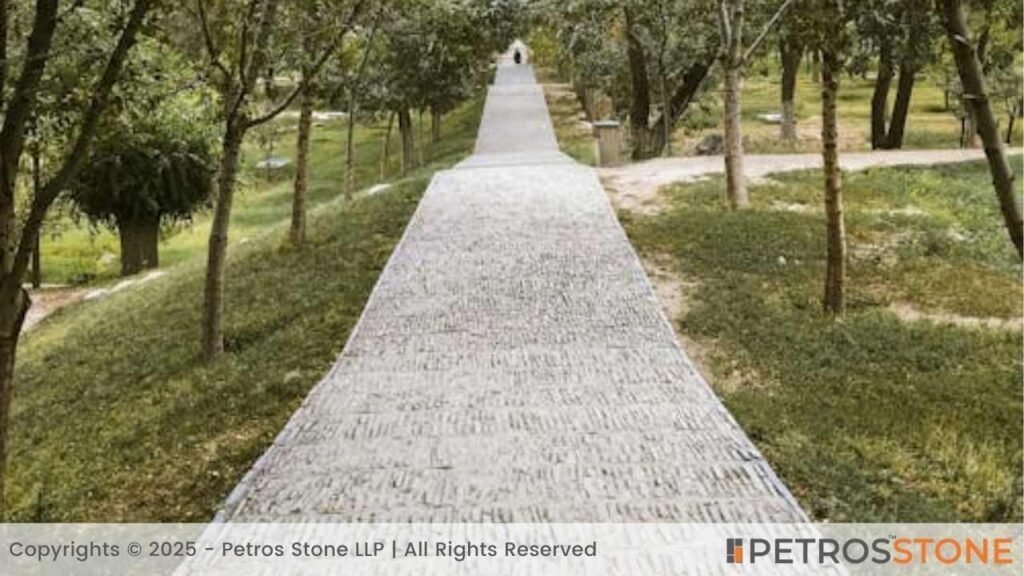
Design
- Concrete is highly textured to mimic stone and brick patterns.
- You can also pigment it with dyes to get the desired vibrant colors.
- Choose concrete over other materials for a smooth and durable surface.
Pros
- Long-lasting, minimal cracks.
- Needs low maintenance as it is quite easy to wash.
- Most suitable to use over large areas.
Cons
- Needs proper finishing, otherwise your pathway will look dull.
- Requires professional installation.
- Not suitable for hot days as it retains heat.
- Poor drainage
Costs
Price ranges between USD 0.84 – 1.81 per sq. ft.
Takeaways
Choose permeable concrete options to not only get the most environmental benefits but also increase groundwater recharge.
8. Bricks Pathway
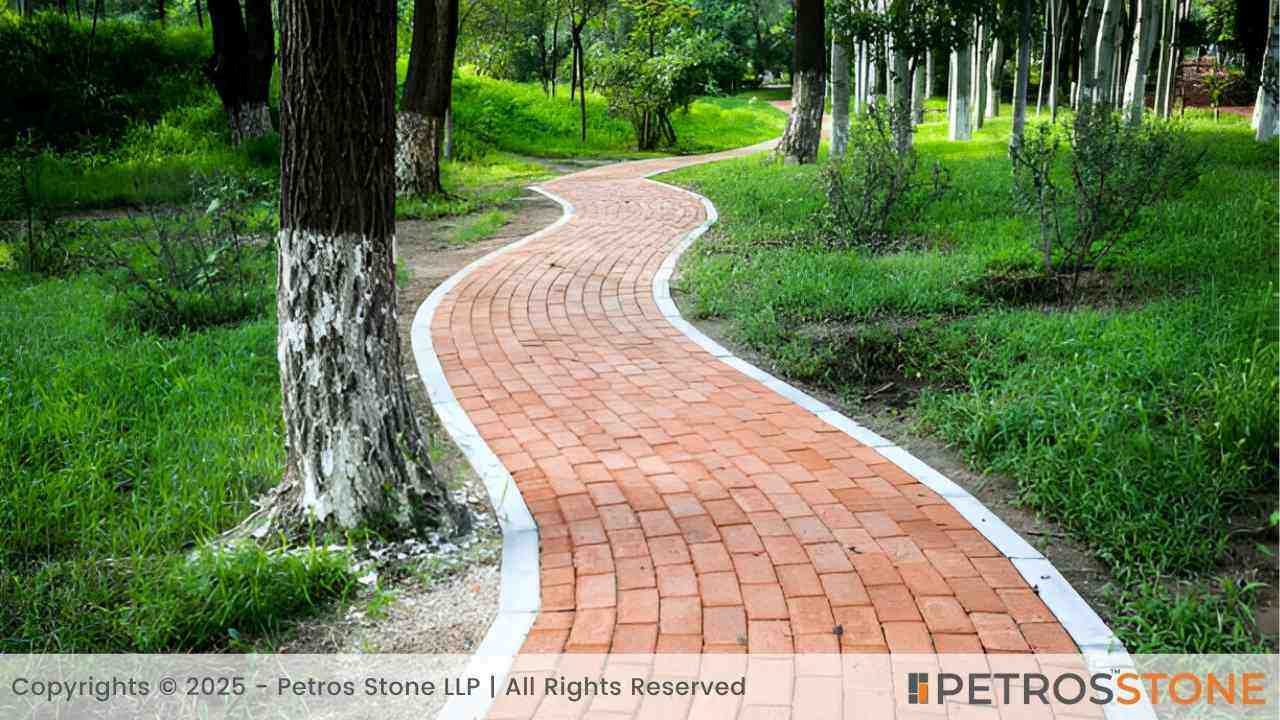
Design
- For a timeless look, consider using brick for your pathway.
- As the best eco-friendly option, using bricks not only reduces waste but also offers an elegant look to your garden.
- If a brick gets damaged, you just need to remove and replace that one brick.
Pros
- If you have a cottage garden, incorporating a brick pathway can add a traditional appeal to it.
- Bricks are considered one of the most durable materials for pathways.
- As the bricks have a textured surface, this makes them less slippery.
- You can arrange bricks in different patterns.
- Withstand different weather conditions.
Cons
- Bricks are costlier than gravel.
- The gaps between bricks can lead to weed outgrowth.
- Bricks are more prone to damage over time.
Costs
- Costs range from USD 0.36 to $1.81 per sq. ft.
- Also, consider the installation cost.
Takeaways
- Use bricks alongside shrubs such as rose bushes and boxwood.
- Accentuate your garden pathway with beautiful blooms
- Add lights to make walking safer at night.
9. Wood Chips Pathway

Design
- If you look for a natural and more affordable pathway solution, wood chips excel the material list.
- As these wood chips are the byproduct of tree trimmings, they are generally cheap.
Pros
- Naturally blend with your garden’s vibe.
- Many affordable options for garden walkways.
- Available them free of cost from tree service companies.
- Highly budget-friendly option that does not compromise the quality or look.
- Simple installation process that does not require any skills or tools.
Cons
- Some wood chips may contain splinters.
- They can stain your clothes when wet.
- As these wood chips decomposed over time, you need to fill in periodically.
Costs
- Wood chips price ranges between USD 0.18– 0.72 per sq. ft.
Takeaways
Customize the look of your garden walkway with customizable wood chips that are available in different sizes, colors, and textures.
Choosing the Best Material for Pathway Construction
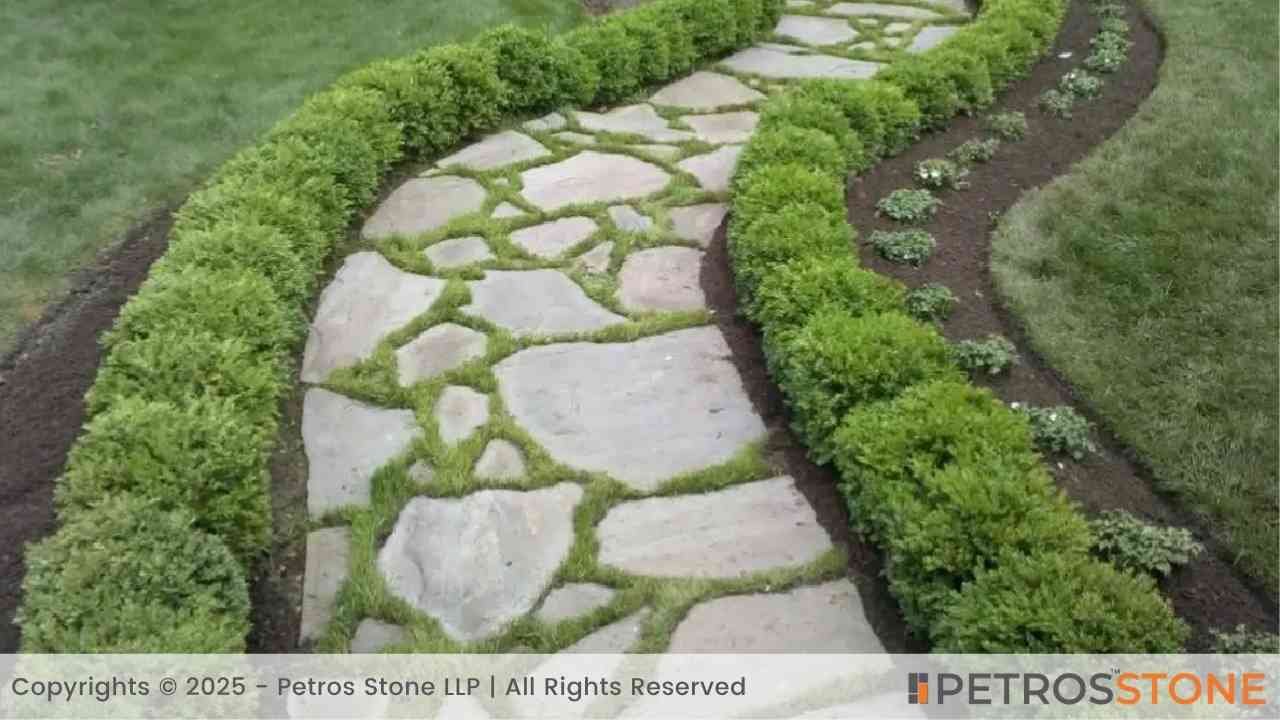
You are still unsure about which material to choose for your pathway. We have compiled a range of factors that influence the choice of the right material. Let’s demystify each one of them to help you make the right decision.
Affordable Pathways
Gravel and Mulch – Best budget-friendly options.
- Buy gravel in bulk from a landscape supply company.
- Get mulch at affordable price from tree trimming services.
High-quality Pathways (relatively costlier)
- Granite – Luxurious natural stone, elite look
- Sandstone – Natural appearance, mid to high range.
- Brick – Higher costs, labor-intensive installation
- Pouring concrete – Higher upfront costs, highly durable
- Pavers – Costly installation
Low-Maintenance Pathways
- Gravel – Little Upkeep, regular weed removal, replenishment
- Mulch – Gradual decomposition, yearly replenishment.
- Bricks– Low upkeep, frequent cleaning to remove algae.
- Concrete – No maintenance after installation, clean occasionally
- Wood Chips – Regular maintenance to keep the look and prevent rot
- Stepping Stones – Minimal maintenance
- Pavers – Easy to maintain, occasional cleaning
Eco-friendly Pathways
- Gravel – Eco-friendly, as water seeps through it effectively
- Mulch – Encourages healthy plant growth, eco-friendly
- Bricks – Sustainable, no need to replace or waste
- Concrete – High impact on the environment, durable
- Wood chips – Long-lasting, chemical treatment for rot prevention
- Stepping Stones – Made from recycled materials, eco-friendly.
A Comprehensive Estimate of the Costs Involved
Want to get a clear idea of the pathway construction material costs involved? Let’s dive deeper into the cost components for a pathway.
Table for Pathway Material Costs Breakdown
| Material | Material Cost (USD/sq.ft) | Pre-Construction Cost (USD/sq.ft) | Installation Cost (USD/sq.ft) |
|---|---|---|---|
| Gravel | $0.42 – $1.20 | $0.50 – $1.50 | $0.50 – $1.50 |
| Granite | $1.45 – $2.17 | $0.50 – $1.80 | $2.17 – $3.61 |
| Sandstone | $0.87 – $1.90 | $1.00 – $2.50 | $1.80 – $3.00 |
| Stepping Stones | $1.52 – $4.75(Indian stone) | $0.80 – $1.50 | $1.50 – $2.90 |
| Mulch | $0.10 – $0.48 | $0.10 – $0.30 (3-inch deep) | $0.40 – $0.90 (3-inch deep) |
| Pavers | $1.08 – $2.65 | $0.80 – $1.50 | $1.20 – $2.20 |
| Concrete | $0.84 – $1.81 | $0.80 – $1.50 | $1.50 – $2.90 |
| Bricks | $1.20 – $2.40 | $0.80 – $1.50 | $1.50 – $2.70 |
Pathway Cost Calculator – Get a Heads-Up Before You Pave
Get accurate measurements and material optimization for any pathway project with a pathway cost calculator. You just need to fill in your desired path dimensions, required aesthetic, and terrain features. The calculator will soon generate the accurate quantity of materials, labor costs, and budget considerations aligned to your location.
- Some calculators are equipped with the latest algorithm that enables important variables such as drainage, gradient requirement, frost penetration, and accessibility specifications according to your region.
- Get precise specifications that aim at minimizing waste while maximizing sturdiness in any weather condition.
Step-by-Step DIY Guide To a Perfect Pathway

Whether you want to add charm to your walkway or have more footfall, building a pathway is a fulfilling DIY project. Scroll through this chart to get a better idea of how to create a pathway on your own.
Step-by-Step DIY Guide
| Steps | Details |
| 1. Start Your Pathway | Choose material: – Slate – Sandstone – Granite |
| 2. Determine Length | – Estimate how much you need – Use measuring tape |
| 3. Choose Material | – Slate (natural, slip-resistant) – Sandstone (warm tones, affordable) – Granite (luxury, high durability) – Concrete Pavers (budget-friendly) |
| 4. Site Preparation | – Remove grass – Level soil – Add weed barrier |
| 5. Laying Pathway | – Arrange stones/pavers – Leave spacing (if required) – Compact & align |
| 6. Finishing | – Add sand/grout in joints – Seal if needed – Clean surface |
DIY Vs Hiring a Professional – Which Option Saves You More?
Clueless about whether to deal with it by yourself or hire a professional is the right choice?
These are some pros and cons to help you make a better decision.
DIY Vs Hiring a Professional
| Factors | DIY | Hiring Professional |
Pros | Save on labor costs | High-quality results, efficiency, hassle-free, solid expertise, latest equipment, and worth investing in the long run. |
Cons | Time-consuming, exertion, need specific skills and tools. | High upfront cost |
Thus, each method has its own set of pros and cons, and acknowledging these can help you make a better decision.
How To Make a Pathway on a Budget

Instead of a costly and labor-intensive pathway, you can save money and time by following these cost-effective tips and tricks. These will help you mitigate the cost of your project without compromising quality –
Choose budget-friendly materials
Prefer gravel for pathways over stepping stones to make them more affordable.
Go for DIY
If you want to save money and are willing to put in some physical exertion, you can handle the site preparation and installation yourself.
Negotiation
Planning to hire a contractor to complete the job? Come up with your best negotiation skills and get the best deal.
Carefully research
It is advisable to check around various suppliers and then get settled for the best deal on materials. It will help you save money. Follow these cost-saving tips to build elegant and durable pathways without breaking your bank.
FAQs
What factors should I consider while choosing materials for my pathway?
Consider the aesthetic appeal you want. Whether you are looking for a rustic look or a classy appearance. Know your requirements beforehand. Also, consider the other aspects, such as drainage issues with the material, durability, and overall upkeep.
I am still confused about whether gravel and stone are a great pick for my pathway. How can I decide?
When it comes to gravel vs stone pathway, both seem to be excellent choices. However, it solely depends on your requirements. If you are looking for a budget-friendly, easy-to-install pathway option, gravel is the right choice. But if you prioritize a pathway with great durability, no maintenance, and a refined look, stone is the best option for you.
How can I prepare the site before constructing the pathway?
- Start by clearing any debris, rocks or vegetation.
- Thereafter, dig the area to the required depth, depending on the type of material.
- Thoroughly press the soil using a tamper.
- Add landscape fabric to prevent weed growth.
Which material is the best for patios or a landscaping project?
Granite works best when it comes to building a strong pathway or an elegant garden path.
- Such pathways perfectly match patios and walks due to their variety of colors and textures.
- It’s best to pair granite with flagstones to get the desired flowing lines.
Summary
Transforming your pathway into a stunning landscape demands a careful investment. You need to consider all the aspects mentioned in this pathway material guide and make your plan accordingly. While choosing a contractor for your project, make sure that you get the best quotes, choose the right material, and prefer quality work to ensure a sustainable pathway. Embark on your journey to creating a pathway that is not only eco-friendly but also blends elegance and durability.
Key Takeaways
- Consider budget, durability, and aesthetic appeal while choosing the best materials.
- Check the pathway cost calculators before making your final decision.
- Get a comprehensive estimate of the costs involved in pathway building.
- Go through DIY instructions to know how to build a pathway on your own.
Feel free to get in touch for a free consultation, quote, and get a detailed understanding from our experts here at Petros®. Visit https://petrosstone.com/ or call +91-8446360361 and WhatsApp

Hi, I’m Rachna, a qualified content writer with an M. Tech in Biotechnology. At Petros Stone, I transform technical ideas into content that informs, inspires, and connects. To me, writing is more than just crafting words, it’s about telling stories that connect with people and the spaces they live in.
Brown Granite
White Galaxy Granite
Blue Bahia Granite
Silver Cloud Granite
Black Pearl Granite
Dallas White Granite


